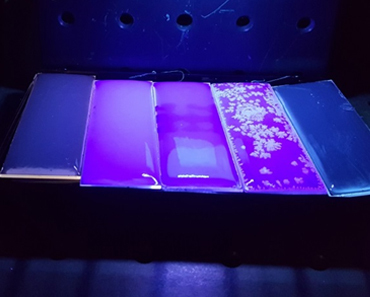
Traditional disinfection using UV light depends on spectral lines from mercury vapor lamps within the absorbance range of DNA. Research at Phoseon examines the efficacy of high-irradiance, narrow-band LED lamps at multiple wavelengths matched to specific bonds in DNA, RNA, and proteins within target microorganisms for UV light disinfection. Higher-than-dose-predicted efficacy may be possible with high irradiance and light targeted at specific, critical molecular bonds in the microorganism.
Our research has proven wavelength selection is essential to getting the most from UV LED disinfection systems. We have discovered utilizing both 275nm and 365nm wavelengths provides a synergistic effect allowing even faster, stable reactions. Both nucleotides and proteins can be modified using this light combination. Therefore, both microorganisms and biological material can be inactivated with the right dose from Phoseon SLM-based systems. This allows for integration into many different industries including medical, food, semiconductor, and others. Our systems are well-suited to disinfect sensitive surfaces due to their low heat emission, high intensity, precise control, and long operating life.
Learn more about our disinfection researchMicroorganism inactivation with experimental dose response and projected time to log 6 reduction at 275 nm and 4W/cm² irradiance.
UV Inactivation of Microorganisms
